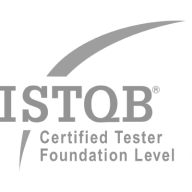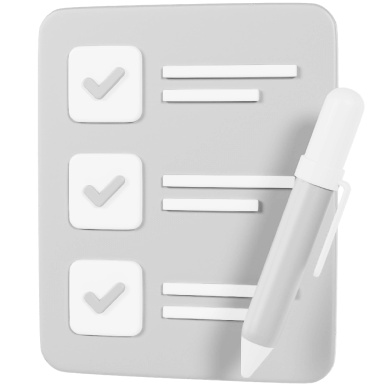
Want to know more? — Subscribe
User acceptance testing is the final step for software teams aiming to deliver maximum customer value. Before launch, thorough UAT verifies that digital products feature a robust technical design free of bugs. It also ensures that the application provides an outstanding experience that meets user needs.
As reliance on digital solutions accelerates across industries, the strategic necessity of UAT increases. The global software testing market and QA are projected to reach over $90 billion by 2030. In comparison, in 2023, this number was lower at $38.42 billion.
Since the launch of Softermii, we have provided numerous clients with full-cycle UAT support. Based on our expertise developing Smart Start and Rently, this article outlines efficient best practices for user acceptance testing. We offer practical guidance to validate products against customer requirements before release.
What Is the Difference Between UAT and QA?
People frequently refer to the QA process when talking about user acceptance testing. These notions, however, should be differentiated since they serve distinct purposes. Let's go through these terms one by one.
User acceptance testing (UAT) is a testing approach that ensures a product satisfies the business's and its end-users' demands. This type of testing is also referred to as beta or end-user testing.
Quality assurance is a designated process covering all software development, release, and operation stages. Process activities aim to ensure the quality of the digital product before its launch.
What distinguishes UAT and QA?
First of all, QA is an umbrella term. It includes strategy, planning, various testing approaches (functional, system, and regression testing), and analytics exercises. These activities help focus the team on critical system issues and maintain alignment with the release and expected quality. QA ensures quality throughout the entire process and associated testing activities. Only when the quality assurance procedure has been completed does UAT begin.
In this context, we should also pay attention to verification and validation concepts:
- The verification is directly related to the QA process and aims to verify the technical aspects of the product. It results in high-quality software that works without limitations and errors.
- The validation applies to UAT and aims to confirm that the product meets user requirements and business objectives.
User acceptance testing is the last testing stage, carried out before launching a digital product on the market. It can be divided into two main types:
- Alpha testing is acceptance testing conducted by in-house testers to verify that a product meets business needs.
- Beta testing is checking users' acceptance of a product. It is conducted among a group of end-users or stakeholders of the company, i.e., people who are not professional testers.
Why Conduct User Acceptance Testing (UAT)
Developers and QA specialists can check the technical aspects of your product. They will take into account its functional features and fix any issues. Yet, even with a technically perfect product, you still can't be 100% sure that users will like it.
Let's now discuss why UAT is important. Here are some reasons:
Compliance with Business Objectives
UAT allows you to test how your digital product behaves in real conditions among real users. This testing helps you identify flaws in your software that you may have missed during the QA process.
Product Improvement
During UAT, end-users can share interesting insights for improving your software. As a result, you can make your product even more customer-centric.
Preventing Losses
Refining your product and fixing bugs before it hits the market is best. Correcting issues before the release will be much cheaper, and you will avoid user dissatisfaction. It is a particularly manageable task for development teams using the Agile methodology and a crucial step in the software testing in the Waterfall model.
UAT Process Pipeline
Achieving the best "Speed to Market" is crucial in software development. A set of entry criteria is established before launching the UAT process to facilitate this. They ensure that the software is ready for the critical evaluation phase and include:
- Zero Blocker bugs. No severe issues could halt the progress or functionality of the application.
- Zero Critical bugs. No critical defects that could adversely affect key operations.
- A maximum of 5 High bugs. A small number of high-priority bugs, while not critical, should be addressed promptly.
- Passage of All test cases*. While all test cases have been passed, there might be some conditions or exceptions noted.
- Internal QA Sign-Off with Exit report. The process mandates an official sign-off from the internal QA team. It must be accompanied by a detailed exit report highlighting the QA phase's findings.
UAT process high-level overview
The provided flowchart is instrumental in visualizing the UAT process. It ensures all stakeholders clearly understand the steps involved, responsibilities, and the criteria for progression from one stage to the next. Here's a high-level overview:
- Start. The UAT process begins.
- Prepare a Set of Test Cases for UAT. This is the first step taken by the customer, where the test cases for UAT are prepared based on the software's requirements.
- UAT Test Cases Execution. Following preparation, the customer executes the UAT test cases to validate the functionality against the business requirements.
- UAT Bug Report. If any issues are encountered during test case execution, they are reported as bugs.
- UAT Test Cases Review. Softermii reviews the UAT test cases, a feedback loop that checks all test cases thoroughly.
- Triage. Each reported bug goes through a triage process to determine its nature:
- If the issue reported is not a bug but a change request, it is documented accordingly and added to the JIRA backlog.
- If the issue is not a bug and the functionality works as per the documented requirements, this is communicated back to the specialist.
- If the issue is confirmed as a bug, it is documented in JIRA, and the customer is notified with the ticket link.
- Decision Making. A decision is made on whether the bug must be fixed immediately or can be postponed.
- If it must be fixed, the bug is included in the current sprint for fixing and retesting.
- If not, the bug is added to the JIRA backlog for future consideration.
- Bug Fix and Testing. Any bugs that are to be fixed are addressed and then tested to ensure the fix is successful.
- UAT Bug Retesting. The customer retests the UAT bugs once a fix has been deployed to ensure the solution is effective.
- UAT Sign-Off. Based on the successful execution of test cases and the resolution of critical bugs, the customer provides a sign-off for the UAT. This step marks the end of the process.
Before Starting UAT: Planning Phase
If conducting UAT is your way, you should first prepare carefully. The planning phase includes several fundamental steps:
Step 1. Define Your Objectives
First, determine what results you expect from user acceptance testing. To do this, you need to review the needs of your business and inform your team about their role in testing.
Testing goals will vary depending on the type of your digital product, whether it's a website, mobile app, etc. The industry in which your business operates will also influence the formation of objectives.
Step 2. Prepare Test Scenarios for User Acceptance Testing
You will need to create separate test cases to test each element of your digital product. They should describe the specific user actions with your software. You can begin by describing typical interactions with your product and then move to more unusual situations.
Creating a UAT test scenario involves adding the following info:
- Test case title
- List of steps
- User results
- Task priority
- Passing status
- User feedback
Here is an example of a test scenario:
|
Task Title |
Steps |
User Results |
Task Priority (High/Medium/Low) |
Passing Status (Pass/Fail/Pass with Comments) |
User Feedback |
|---|---|---|---|---|---|
|
Check if an unregistered user can add the product to the shopping cart |
1. Open the website |
The product appeared in the shopping cart |
High |
Pass |
- |
|
2. Add any item to the shopping cart |
The system has requested the user to sign in |
||||
|
3. See if there’s no need for authentication |
|||||
|
4. Move to the shopping cart |
|||||

|
|||||
Step 3. Choose Who Will Perform User Acceptance Testing
You can now begin to select test participants based on your goals and ready-made test scenarios.
You can engage your testers' team to conduct alpha testing. Or you may delegate UAT to outsourcing providers if there are not enough in-house employees to do this job. For beta testing, you need to gather a group of end-users who may be interested in your product. As a result, you can conduct testing in a real environment.
Conducting UAT Testing: Executing the Main Phase
After the UAT planning phase, you can proceed directly to conducting user acceptance testing. Here's what you need to do:
User Acceptance Testing Execution
You can start the UAT testing process once you have prepared the test scenarios and cases and found the participants.
Testing usually occurs in a separate room, where your QA specialists and project managers are with the rest of the test participants. The user acceptance testing process can take several sessions over several days.
You must start by instructing the participants on performing the tasks correctly, filling in the test scenario forms according to each criterion, and providing feedback. After that, end-users can begin to complete the test cases.
During testing, your company's employees should monitor work progress and assist participants in case of any questions or issues.
UAT Testing Results Documentation
As a result of the testing, you get a lot of valuable data from your users. At the end of the test session, your employees can also conduct participant surveys and record the information received. Then, you'll have the documents with feedback and comments.
The Last UAT Testing Stages: Evaluation and Reporting
After testing, you have plenty of data that your QA specialists will need to study. These reports compile key details and recommendations geared towards continuous improvement objectives.
Evaluation Phase: Structured and Systematic
The evaluation phase involves meticulous and structured analysis based on documented processes:
Execution and Bug Reporting
Your Specialists initiate UAT by executing test cases within the predefined scope. Any bugs found during UAT are reported following the "UAT Bug Standard."
Softermii QA's Role in the Triage Process
The Softermii QA team reviews each bug report. This process has several outcomes:
- Change Request Identification. If an issue is not a bug but a change request, it's logged in the Jira backlog. Your specialists are informed with evidence, and we encourage additional discussions to confirm if it's a bug.
- Functionality Verification. If the functionality meets the documented requirements and isn't a bug, your experts get proof, with room for further discussions.
- Bug Confirmation. If it is indeed a bug, it's documented in Jira, and your specialists are notified along with the Jira ticket link.
Bug Priority Follow-Up. The QA team assesses the bug's priority to decide if it should be fixed in the current release or if it's non-critical and can be deferred.
Decision-Making by Your Specialists
- Immediate Fix Decision. If a bug is to be fixed immediately, developers include it in the current sprint for resolution. QA shares the estimated fix deployment date and maintains daily follow-ups on the UAT bug status.
- Deferred Fix Decision. If the bug is not critical for the current release, it remains in the Jira backlog for future prioritization and planning.
- UAT Bug Retesting. Once a fix is deployed to UAT, your specialists retest the bug.
- Final UAT Sign-Off. This is based on the execution results of UAT test cases and the scope of unresolved bugs.
The Reporting Phase: Drawing Conclusions and Building Strategies
Then, your QA specialists initiate the reporting phase. It involves drawing conclusions based on evaluated data. Your employees will build a strategy to improve your project and correct errors.
UAT Exit Criteria:
- None Blocker bugs
- None Critical bugs
- Maximum of 5 High bugs
- Successful passage of All UAT Test cases
- Receipt of UAT Acceptance from your specialists
Note: Bugs agreed to be deferred to subsequent phases are not included in these criteria.
This systematic approach ensures the identification and resolution of immediate issues. It also contributes to improving your project's quality and efficiency.
What Needs to Be Done to Make UAT the Most Valuable
Let's look at best practices to make your UAT testing strategy valuable and effective. Using these methods, you can get valuable insights from your testing. Here's what you should pay attention to:
- Prepare for the UAT in advance, preferably in the early stages of your product development.
- Before testing, be sure to create UAT checklists in which you will describe the main goals and objectives.
- Before conducting beta testing that involves your end-users, execute UAT among your employees.
- Clearly and concisely describe the goals and expected test results.
- When creating a UAT test plan, prefer real-life test scenarios.
- Before conducting UAT, be sure to perform a usability test.
UAT Testing Templates [Bonus]
We have already given an example of a test scenario and mentioned the need to create a checklist for user acceptance testing. We want to share some more UAT templates that may be useful to you:
- UAT Test Plan Template by Coley Consulting
- UAT Test Plan Template by International Institute of Business Analysis
- UAT Test Report Template by QATestLab
With these templates, you can significantly improve your UAT approach.
Softermii's Experience in UAT Testing
Our company provides software testing services that guarantee the solution of problems in the initial development stages and, as a result, savings of up to 60% on your product launch.
Our specialists can also successfully do user acceptance testing. This process includes preparing test documentation for end-users, test execution and support of this process, and evaluation of data collected from users.
We have already had many thriving projects for which we have conducted UAT. In particular, these are products such as Smart Start and Rently. Let's dwell on them in more detail.
Smart Start
Smart Start is a mobile and web application for personal finance management. Our goal was to create an application that would allow users to control their budget and financial goals.
Our QA team conducted over 200 tests, including automated testing and UAT. As a result, we developed a high-security application that gathered more than 24,000 subscribers in just two months after launch.
Rently
Rently is a web and mobile application for showcasing rental housing. The customer turned to our company to improve the usability and performance of the existing product.
We conducted the UAT to identify the app’s main use cases and to determine improvements in the design of this digital product. As a result, our team delivered a convenient application that has received favorable user reviews.
Final Thoughts
User acceptance testing is a critical step before launching any new product. Conducting thorough UAT enables teams to identify areas for improvement and create products that customers value and want to use.
While this process contains many nuances, proper planning and clear goals are fundamental. Teams should thoughtfully select participant groups that represent real-world users and analyze results to uncover deficits.
If you are seeking to ensure your product delivers an exceptional user experience, contact our experts today. Making wise investments in comprehensive, expert-led UAT drives user satisfaction, adoption, and loyalty throughout the product lifecycle.
Frequently Asked Questions
What is a UAT checklist?
The UAT checklist summarizes all tasks and expected results from user acceptance testing. The user acceptance testing should consist of the following:
- Pre-UAT stage: defining the business goals, preparing test scenarios, and gathering test participants.
- UAT execution stage: conducting UAT testing and gathering user reports.
- Post-UAT stage: evaluating the gathered data and making conclusions.
What makes a good UAT?
To get the most valuable results from UAT, you must prepare for testing in the early stages of product development, clearly define the testing objectives, and prepare the team and end-users for testing in advance.
Do all software development companies provide UAT testing?
No, not all. Some, for example, focus purely on product development. However, Softermii's services include product development, design, and testing. In particular, we conduct user acceptance testing for our clients.
How to generate criteria for entering and exiting UAT?
Consider the industry in which your business operates and the type of software you need to test. Also, think about what goals you want to achieve with UAT. To exit the testing, you must ensure the participants have completed all the tasks and submitted the relevant reports.
How about to rate this article?
743 ratings • Avg 4.6 / 5
Written by:























